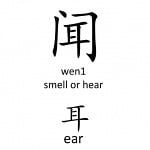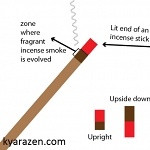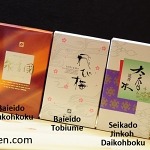I had been a strong advocater of electric heating of fragrantwoods for quite a while. The reason behind this, stems from observation of what society and people need. With high stressed levels, long working hours etc, it is important that they can find quick relief and quick solace. The electric burner fulfils this criteria very… [Read More…]
Processing of Sandalwood in Chinese Incense
If you have been following my youtube channel or some national talkshow i.e. (国学堂) in China, you might have come across the bold assertion that all sandalwood used in incense must be processed. According to them, if the sandalwood is not processed, smelling too much of it will cause one to feel restless from the… [Read More…]
Incense Review – Scents of the Edo Period
In the Chinese Ming Dynasty (1368-1644 AD), the stick incense was invented. Dried herbs were blended, ground into powder, and mixed with binder powder, the powdered bark of the Machilus Thunbergii tree which acts as a glue when wet. The resultant dough could then be extruded or rolled into sticks, and allowed to dry in… [Read More…]
Cardio-protective properties of Agarwood
The cardio-protective properties of Agarwood(particularly Kynam) had been recorded in chinese medical literature for many centuries, with written accounts from many historical chinese physicians. In the traditional Chinese/Han medicine that Japan practices, there is a fabled 速效救心丹 (cardiac rescue pill) that uses kynam as one of its key ingredients. Traditional chinese medicine users in Hainan… [Read More…]
Incense Review – Translucent Path from Shoyeido
Incense : Shokaku (Translucent Path) Brand : Shoyeido Source : Purchased from Japan Price : 9450 yen / 15 sticks (USD $95) Amount Burnt so far prior to this review : 6 sticks Taste profile : Sweet : +++ Bitter : very slight tinge Sour: very slight tinge Scent characteristics : Texture – Mellow, soft, ethereal … [Read More…]
Incense Notes
闻, or 闻香 (mon-koh), can be literally translated as to smell or to listen to fragrances. This is probably why the Chinese word for the action of smelling, contains a character representing the ear. Most people would have expected a nose instead of the ear. Asano Michiaki of the Kaori-Bunka (an Incense culture research… [Read More…]
The Importance of Incense Stick Angle
I felt rather inspired and compelled to write this article after an enjoyable meetup with Mr Stephan S. from Mexico, whom had stopped by Singapore for a while. I’m extremely impressed the olfactory prowess of Stephan which I believe to be a notch above mine (I hope to invite him to write a guest article… [Read More…]
Incense Review – Battle of the Tangy notes!
Apologies for the slow update, this article was taking quite a while to write and required several revisitations to the respective incenses over a few days before I could finalize it. It is into its 7th revision now and I’m publishing it for the time being, subjected to further edits. I thought I would… [Read More…]
Kyara versus Shin-Kyara
The subject of Shin Kyara is rather new and foreign to people outside of Japan, but this definition/concept has been known domestically, in certain incense schools for a very long time! Some incense companies have been substituting Kyara with Shin-kyara in their Rikkoku sets as a cost cutting measure. Basically Shin Kyara is just… [Read More…]
Incenses from Kogado 香雅堂
This is by far the ultimate pure mysore sandalwood stick I’ve ever came across in Japanese Incenses! Having had several hours of heavy rain where I am, perhaps this picture outside my window is the most apt in describing the exact olfactory experience during the burn process of this incense, tranquil, cool, sweet, misty with bright sparkles. At the back of my head, the Phantom of the Opera’s Music of the Night plays at half its usual speed.
- « Previous Page
- 1
- …
- 5
- 6
- 7
- 8
- 9
- …
- 11
- Next Page »









